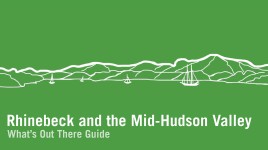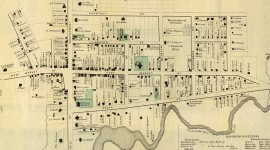Landscape Information
This park incorporates approximately 48 acres of rolling topography, dominated by naturalized woodlands and meadows, situated north of East Market Street and a U-shaped bend of the Crum Elbow Creek. The property features remnants of the New Guinea Community, also referred to as Guinea Town, a settlement of free and formerly enslaved people established around 1790. The north-south oriented Fredonia Lane, framed by extant, parallel stone walls, served as the settlement’s thoroughfare, enabling access to the creek and its mills. The community disbanded in the mid-nineteenth century and in 1868 lawyer John Hackett acquired land adjacent to Fredonia Lane, establishing an earthen hill to the east, on which he sited a wood frame Victorian-style residence. The property, named Crum Elbow Farm and subsequently Hackett Hill, was deeded to the Boy Scouts of America in 1971 and was purchased by the town in 1991.
The extant former residence is accessed along an approximately 300-foot-long, looped entry drive lined with trees such as maple, pine, and cedar. The densely canopied hill is surrounded primarily by gently sloping lawn, framed by maple and hickory woodlands. The expansive lawns feature visitor and recreational amenities, including a playground and swimming pool. East of the hill is a memorial, commemorating firefighter Paul Tegtmeier and other victims of the terrorist attacks of September 11, 2001.
The park is traversed by a network of footpaths that collectively measure more than a mile, accessed along the lawn’s eastern and western edges. The footpaths provide access to a distinct rock formation, Gorilla Rock, and Fredonia Lane. In 2018 the New Guinea Community Site was listed in the National Register of Historic Places.














